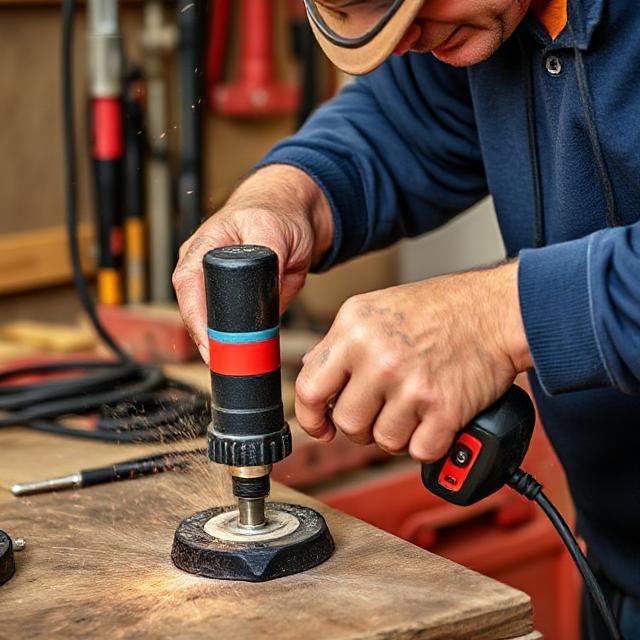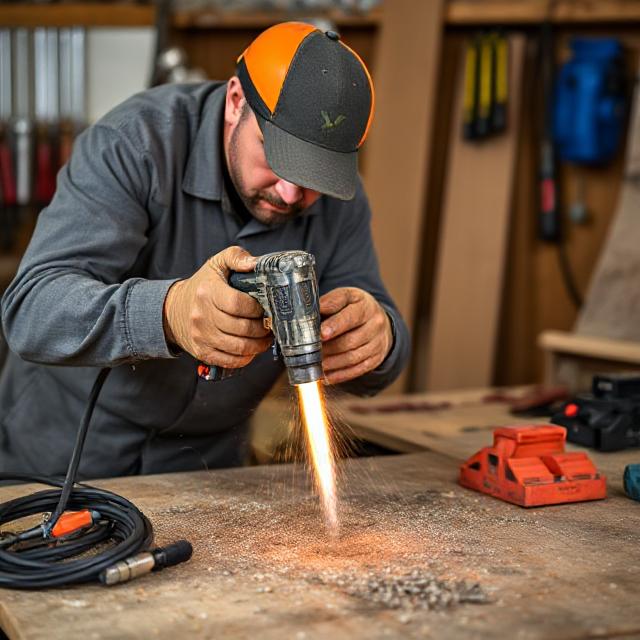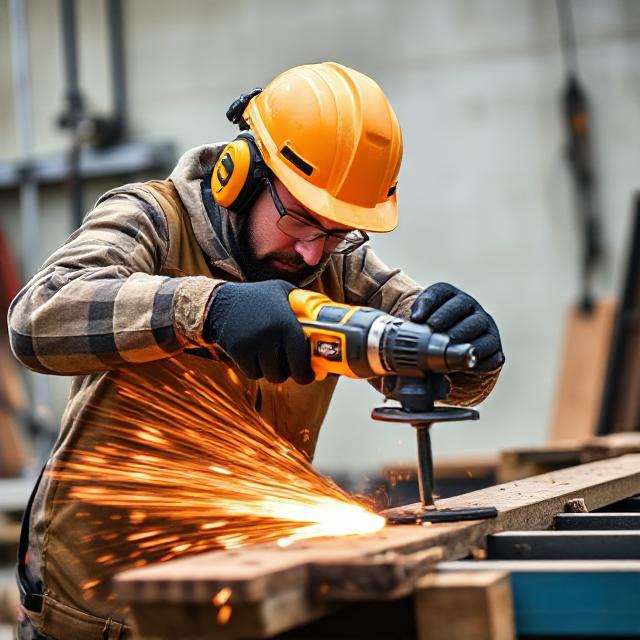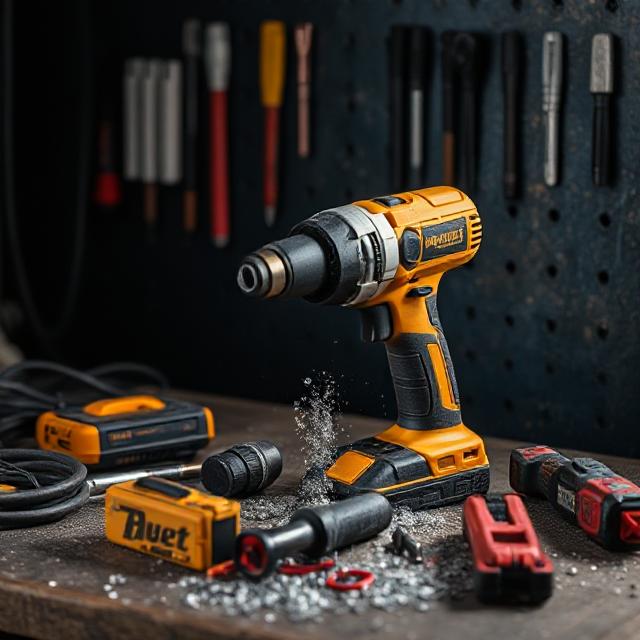Safe Use of Power Tools on Construction Sites is one of the most critical safety considerations for any builder, contractor, or site worker.
With the increased reliance on electric, pneumatic, and battery-powered tools to boost productivity, construction sites are inherently high-risk environments. Misuse or negligence can lead to serious injuries, amputations, or fatalities.

Understanding how to operate these tools safely isn’t just a legal requirement—it’s a moral responsibility.
In this article, we’ll explore proper practices, training requirements, and the PPE needed to protect workers, while also suggesting where to buy trusted tools and gear, including from SafetyProductSupply.com (DoFollow).
- Why Safe Use of Power Tools on Construction Sites Is Crucial
- Common Hazards Associated with Power Tools
- Essential Safety Guidelines for Power Tool Usage
- Best Practices for Operating Power Tools
- Training and Supervision Requirements
- Dust, Noise & Vibration: The Hidden Dangers
- Quick Reference: Construction Power Tool Safety Checklist
- Where to Buy Tools and Safety Gear
- Final Thoughts on the Safe Use of Power Tools on Construction Sites
Why Safe Use of Power Tools on Construction Sites Is Crucial
Power tools—when used incorrectly—can lead to lacerations, electric shock, fire, and even explosions.
According to the Canadian Centre for Occupational Health and Safety (CCOHS), thousands of construction-related incidents are tied to hand and power tool misuse annually.
Safe usage protects not only workers but also keeps operations running smoothly and reputations intact.
Common Hazards Associated with Power Tools
Power tools on a construction site pose several hazards:
- Contact Injuries from rotating parts, blades, and bits.
- Electrical Risks from damaged cords, improper grounding, or wet environments.
- Noise-Induced Hearing Loss, often from prolonged exposure to tools above 85 dB.
- Vibration Syndrome, leading to long-term musculoskeletal damage.
- Dust Inhalation, especially during cutting, grinding, or sanding tasks.
- Kickbacks and Tool Recoil, which can cause blunt trauma or lacerations.
Essential Safety Guidelines for Power Tool Usage
Always Choose the Right Tool

Using the correct power tool for each job prevents misuse and helps maintain control. Avoid forcing a smaller tool to do a heavy-duty job, and follow the manufacturer’s instructions regarding attachments.
Conduct Visual Inspections Daily
Before each shift, tools should be inspected for:
- Frayed cords
- Cracks or breaks in housing
- Missing guards or safety triggers
- Loose attachments or fittings
If any defects are found, tag the tool as “Do Not Use” and report it to the supervisor.
Wear the Right PPE
Ensure workers are equipped with:

- Safety goggles or face shields to prevent eye injuries.
- Hearing protection such as earmuffs or plugs for tools generating over 85 dB.
- Anti-vibration gloves to reduce strain from prolonged tool use.
- Steel-toe boots and non-slip gloves for grip and toe protection.
- Dust masks or respirators for silica or particle exposure.
👉 Find industry-approved PPE on SafetyProductSupply.com
Best Practices for Operating Power Tools
Use Both Hands and Secure Workpieces
Secure materials with clamps or vises whenever possible. Hold tools with both hands to maintain control and reduce the risk of recoil or slips.
Keep Your Work Area Clean
Power tools demand clean, dry, and clutter-free environments. Wet floors, exposed wires, and unmarked obstacles are accidents waiting to happen.
Never Remove or Bypass Guards
Guards are there for a reason. Removing them might speed up a task temporarily—but it greatly increases risk. Never tamper with safety switches or auto-shutoff mechanisms.
Disconnect Tools When Not in Use
Unplug or remove the battery from tools during maintenance, blade changes, or when not in use. For pneumatic tools, disconnect the air supply.
Lock-Out/Tag-Out Procedures
When working with high-powered or hardwired tools, implement lockout/tagout procedures to prevent accidental startups during servicing.
Training and Supervision Requirements

Worker Training
All workers must be trained in:
- Correct operation of each tool.
- Recognition of tool-specific hazards.
- PPE use and maintenance.
- Emergency shutdown procedures.
Supervisor Responsibilities
Supervisors should ensure:
- Daily tool inspections are completed and documented.
- Workers are using PPE properly.
- Faulty equipment is reported and repaired or replaced.
- Job-specific safety briefings are held regularly.
🔗 Learn more at OHSE.ca
Dust, Noise & Vibration: The Hidden Dangers
Dust Exposure and Silica Risks
Many construction tasks generate respirable crystalline silica, which can cause long-term respiratory diseases. Use:
- Dust extraction attachments
- Wet cutting methods
- HEPA vacuums
Noise Hazards
Prolonged tool use can cause permanent hearing loss. Limit exposure time and use quieter models when possible.
Vibration Injuries
Repeated exposure to hand-arm vibration can lead to Hand-Arm Vibration Syndrome (HAVS). Rotate tasks and provide anti-vibration gloves and proper breaks.
Quick Reference: Construction Power Tool Safety Checklist
| Safety Task | Status |
|---|---|
| Conducted pre-use tool inspection | ✅ |
| Verified guards are in place | ✅ |
| PPE worn (goggles, gloves, etc.) | ✅ |
| Clear and dry work area | ✅ |
| Tool unplugged when changing parts | ✅ |
| Workers trained on tool use | ✅ |
Where to Buy Tools and Safety Gear
Reliable equipment can make the difference between safe work and serious injury. For power tools, accessories, and certified PPE, visit:
👉 SafetyProductSupply.com – Your one-stop shop for professional-grade tools, safety glasses, gloves, masks, and more.
Products available include:
- OSHA/CSA-rated angle grinders, drills, and saws
- Cut-resistant and impact gloves
- Dust respirators and N95/N100 masks
- Safety boots and hearing protection
Final Thoughts on the Safe Use of Power Tools on Construction Sites
Safe Use of Power Tools on Construction Sites is not just a recommendation—it’s a necessity. Proper training, consistent PPE use, daily inspections, and tool maintenance form the foundation of a secure work environment. Supervisors must lead by example, and workers must never compromise safety for speed.

Before your next task, ask: Have I inspected my tool? Am I protected? Is my team trained? If the answer is yes, you’re building more than structures—you’re building a culture of safety.
Start upgrading your safety gear today at 👉 SafetyProductSupply.com

No comments yet